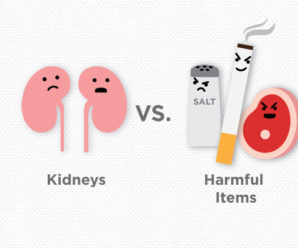
Much of what determines a person’s health occurs outside a clinic or hospital. Our health is shaped by our environment and resources available to us in daily life.
These factors are called social determinants of health (SDOH). They are defined by the World Health Organization (WHO) as “the conditions in which people are born, grow, work, live, and age, and the wider set of forces and systems shaping the conditions of daily life.”
The WHO reports, “in countries at all levels of income, health and illness follow a social gradient: the lower the socioeconomic position, the worse the health.”
Examples of SDOH include:
- Income
- Education
- Employment status
- Access to healthy food
- Affordable housing
- Safe neighborhoods
- Early childhood development
- Social inclusion and non-discrimination
- Access to affordable health services of quality
Defining health equity
Jess Gaffney, manager of Health Equity, Diversity and Inclusion at Marshfield Clinic Health System, said health equity is achieved when every person has the opportunity to attain their highest level of health potential. She noted that the pandemic has highlighted the absence of health equity for many groups and individuals.
Examples of inequities
“Middle- and higher-wage workers who can work remotely during the pandemic are having a very different experience than low wage workers, who were deemed essential. Those essential workers have had to risk in-person contact to perform their jobs and have experienced higher rates of job loss,” Gaffney said. “Across the country, rural communities with limited access to broadband internet, and long drives from the nearest medical center, suffer from a unique lack of access to care and support services.
“Lack of access to healthy, affordable and culturally-appropriate food increases the risk of chronic disease and poor health outcomes,” Gaffney added. “We know people and groups often have poor health outcomes simply because of the zip code they live in.”
A study published in the Journal of Women’s Health found, “Black women continue to experience excess mortality relative to other U.S. women, including—despite overall improvements among Black women—shorter life expectancies and higher rates of maternal mortality. Moreover, Black women are disproportionately burdened by chronic conditions, such as anemia, cardiovascular disease, and obesity. … The higher burden of these chronic conditions reflects the structural inequities within and outside the health system that Black women experience throughout the life course and contributes to the current crisis of maternal morbidity and mortality.”
According to the American Foundation for Suicide Prevention, in the United States, The rate of suicide is highest in middle-aged White men, accounting for 69% of suicide deaths in 2019.
“The causes of health inequities are as varied as we are as individuals, and these inequities can impact any group of people,” Gaffney said.
Local equity efforts
Gaffney added, while health care providers alone cannot solve health equity issues, it is important for them to lead on the issue. She noted Marshfield Clinic Health System has taken several steps in this respect.
“We signed the American Hospital Association’s Health Equity Pledge. That made us one of four health systems in Wisconsin to commit to eliminate health care disparities in our state. We are developing an ambassador program and business resource groups to promote equity and inclusion in the workplace. By working with community-based organizations, we are addressing social determinants of health that impact our patients and communities. It’s also been an honor for our System to be part of the Governor’s Health Equity Council and other State and National collaboratives to address equity.”
To learn more about health equity, and local efforts to address inequities, click here.







Leave a Reply